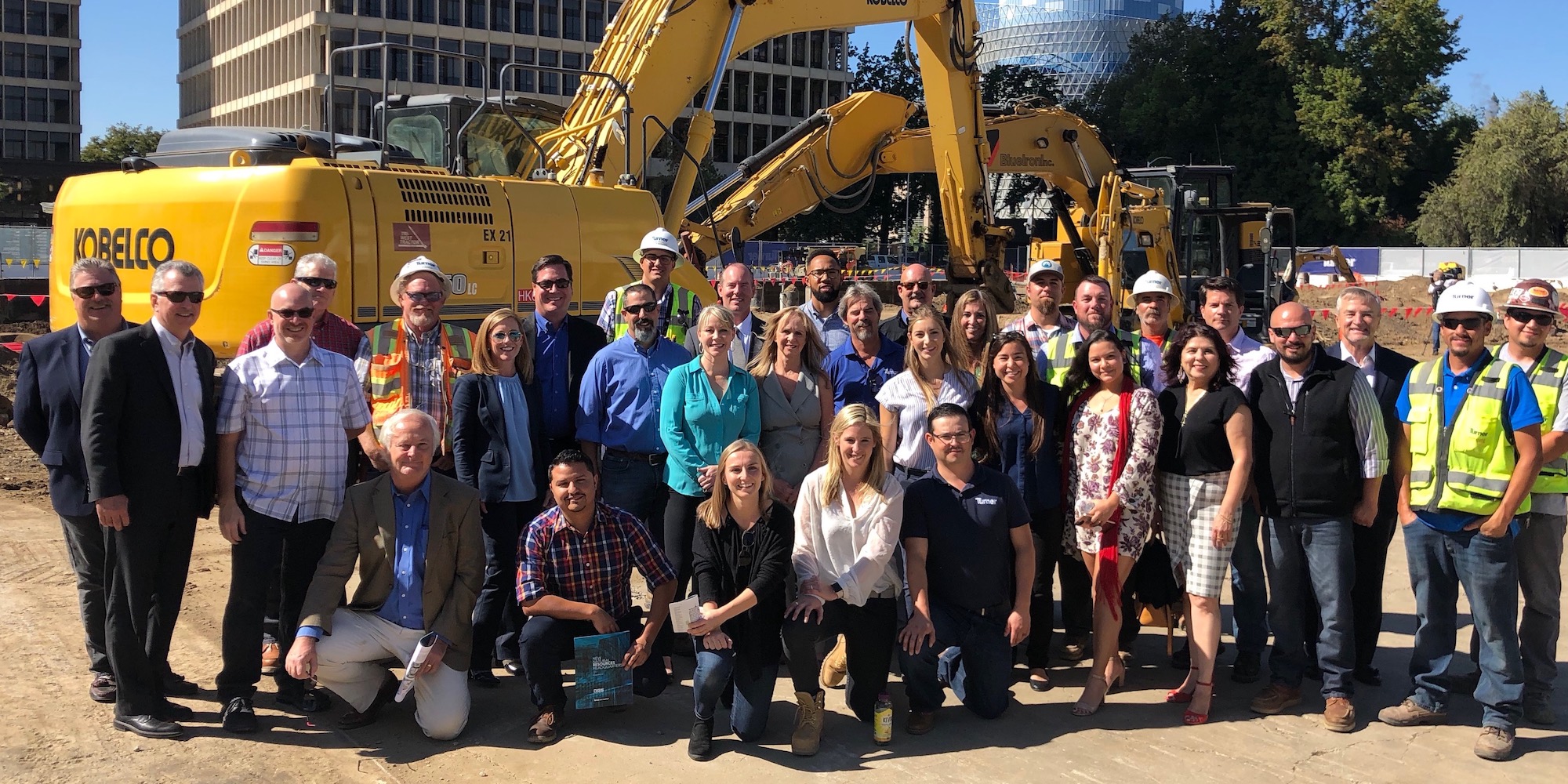
Learning to 'own it'
INTERVIEW – During his recent visit to California, our editor sat down with a Senior VP from Turner Construction to discuss leadership transformation and the importance of diversity in the workplace.
Interviewee: Lisa Ballantyne, Senior Vice President and General Manager, Northern California, Turner Construction Company – San Francisco, California
Roberto Priolo: What led a construction company as well-established as Turner to turn to lean thinking?
Lisa Ballantyne: Turner is a 117-year-old company and our track record shows we are good builders, but we didn’t want to become complacent. You are only as good as your last job! That’s why the company has been focusing on providing more value to customers and, at the same time, exploring more ways to remain profitable. It only made sense for this journey to involve lean thinking: the more efficient and operationally excellent we can get, the more successful we will be as a business.
Lean construction has been a topic on the West Coast for a long time, and here in the Northern California we introduced it long ago – we had a lean manager 10 years ago. That gave our business unit something of a head start when the company-wide effort to embrace Last Planner System on all projects was launched. We succeeded at implementing the lean method because we understood it was fundamentally changing the way we were working. We knew we were pulling instead of pushing. We knew we were engaging trades in a different way. We don’t have everyone fully believing yet, but there is no doubt the culture has begun to shift.
I think the biggest catalyst of this change came when, around two years ago, leaders started to engage more, support the projects first hand, and join the huddles. As a management team, we also came to the realization that we needed to know more, and better understand what the application of the Last Planner System meant and, therefore, what we were asking our people to do.
RP: What did that realization lead to?
LB: Turner had organized a five-day advanced lean training program to help our superintendents and project managers to apply lean ideas to their jobs. I decided to join and it was absolutely eye-opening. It introduced me to a radically different way of thinking and learning. We couldn’t continue to feed solutions to people and expect them to grow!
As we wondered how to build on that epiphany to further develop our lean leadership skills, I called my colleague Charlie Murphy in the New York office. I remembered that, back in January 2018, he had given a talk at the Senior Leadership Meeting in Denver about working with the Lean Enterprise Institute (LEI) and that the idea had intrigued me.
In May, we organized a two-day off-site with LEI’s John Shook and Mark Reich for our regional leadership team to learn A3 thinking using the book Managing to Learn. Eight of us were part of first cohorts of leaders going through this development program, and we are now in the phase in which we are working on our coaching skills. Working with LEI gives us cadence and discipline, and let me tell you: I wish those conversations would take place every day, as I have a lot to learn still!
RP: What’s your reflection on the fact that your lean transformation – like many others – began with a focus on the tools rather than the culture?
LB: When we started, we didn’t know what we didn’t know! That’s why we opened with a practical approach of the Last Planner System. It is a great tool for our people and it really helps us to better manage hand-offs from one trade to another, but it is still a tool. We were using many others – from 5S to visual management – but none of them could lead to a real transformation without the active engagement of leadership in the development of a lean culture.
The Last Planner System wasn’t easy to implement, because it represented a change in vocabulary and a different way of doing things. However, I think the tools are becoming easier to integrate, as we train more and more leaders in lean thinking and help our people understand why using those tools is so important. I think we have the tools-based transformation on one side and the cultural element on the other, and they are slowly coming together. At the end of the day, everyone here has the same mission: evolving into the best builder we can be.
RP: Have you begun to see a change in the way people interact with leadership?
LB: I think people feel more comfortable than they used to, and that they understand that being vulnerable is okay. I look at their A3s and it makes me proud to see how open they are to share their thought process.
We have been trying to change for some time now, even before lean came into the picture. Being that we are in Northern California, we even had our own hashtag for it: #OWNIT, which stands for One Turner, What is best for the customer, Never hold back, Is this the best you can do, and Treat everyone with respect. We have a whole new generation coming in, and they expect to be interacted with differently. They want to be part of the solution.
RP: What can you tell us about knowledge transfer at Turner Construction Company?
LB: I think that talking to one another is still the best way of sharing. So, the real question for me is, how do we make it part of our nature to share openly? And how do we share more effectively? That’s the idea behind Turner-wide communication tools like the Turner Learning Tree, where people can post ideas and insights. But it is more about the culture allowing the knowledge transfer to happen than it is about the system you are using, because nothing beats pulling information from someone else. For example, when I heard what Charlie was doing with LEI in New York, I picked up the phone and asked him all the hard questions.
So, some of that knowledge sharing happens organically: I have worked for Turner for 20 years and I have grown in this business together with many of the colleagues from around the country whom I regularly interact with. There is something about that kind of personal connection that can’t be beat.
RP: What was your experience with A3 thinking?
LB: For the two-day off-site, we were asked to come with a problem we wanted to solve. Of course, we picked huge problems, super broad and very complicated. Mine was that Last Planner System was not used consistently across our projects – a big problem, but probably not the best one for my very first A3, because it could branch out in a million different directions. I have been using the coaching sessions with LEI and my gemba walks to gradually close in on a more specific problem that still has a big business impact. Truth is, it is great to learn problem solving in a facilitated environment. As I reflect on our journey so far, if I could change one thing, I would start learning myself much sooner.
RP: It is fantastic to see a young woman in a leadership role in an industry that is traditionally predominately male. Any thoughts on gender equality?
LB: I constantly reflect on this. Women and men are biologically different and there is a lot of science around how they also think differently. This is something I have always been aware of: it’s not just how we say something, it’s also how people receive it. If you are the odd one out and want to communicate in the only way you know, the majority might simply not understand you. You might mean one thing and they might hear another. You don’t need to change your style (or yourself), but you do need to find the most effective way to communicate with others.
When I look at all the people I have worked with, I sometimes wonder: “Was I just lucky?” But then I look at other women working here and I realize that this is just the company’s culture. Turner is a very inclusive company, and I never felt held back because I am a woman. We just advocate for people who do good work here, and that’s what I focused on.
My hope is that we have more and more diversity at different levels of the company going forward, because diversity is what makes us strong. The fact you have a different voice and perspective is exactly why people should be listening to you! Everyone who is “different” brings something new to the table.
THE INTERVIEWEE

Read more


FEATURE – Effectively applying just-in-time and achieving flow is impossible without leveling production first. Yet, most companies seem to think this is impossible because demand is so variable… but is it really?


FEATURE – Following the recent CXO Summit in Singapore, a team from the Lean Global Network reflects on the partnership with SIT and its potential effects on the city-state.


CASE STUDY – A very lean system that runs like clockwork and constant attention to customer service enable Barcelona-based 365.café to achieve the impossible: supplying 55 bakeries out of a 650-sqm factory.


FEATURE – While at Starbucks, the author learned the importance of collaboration among the key functions of Operations, HR and Finance to advance a lean transformation.

